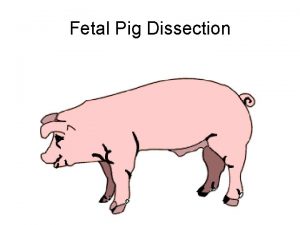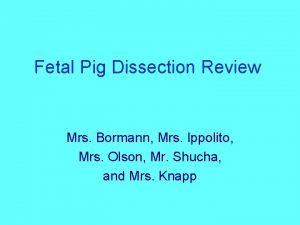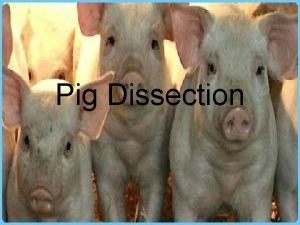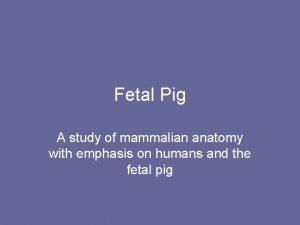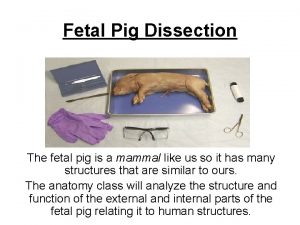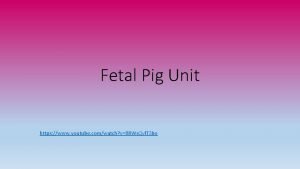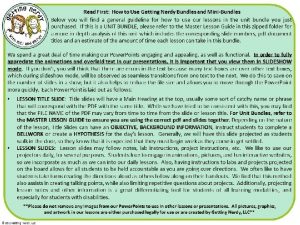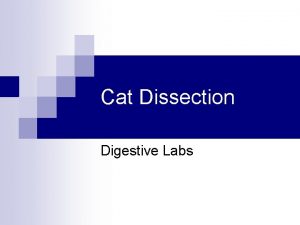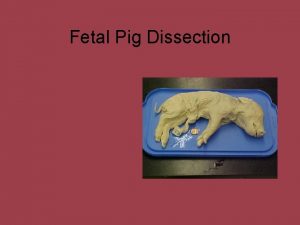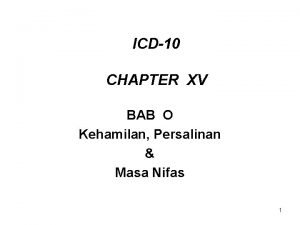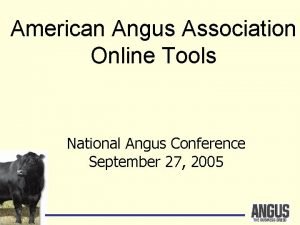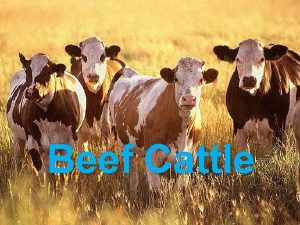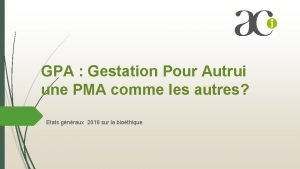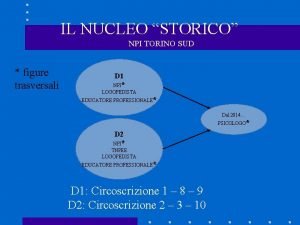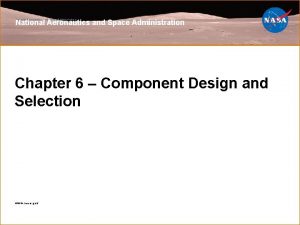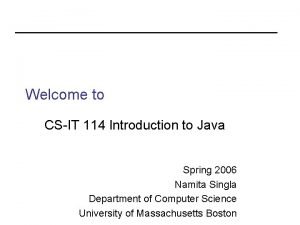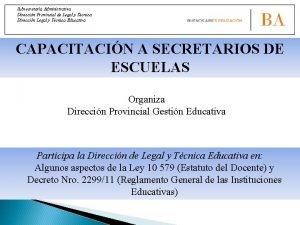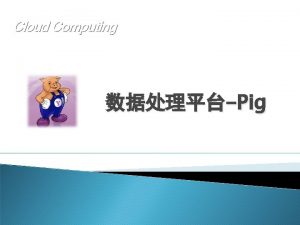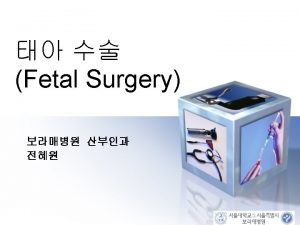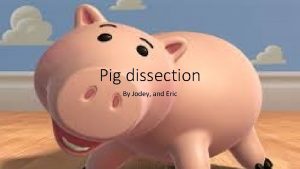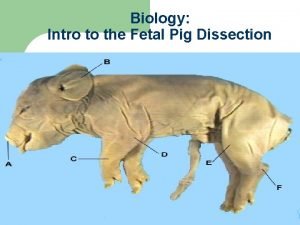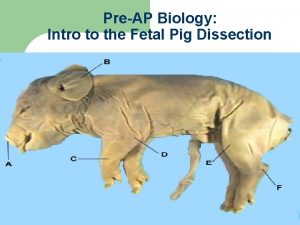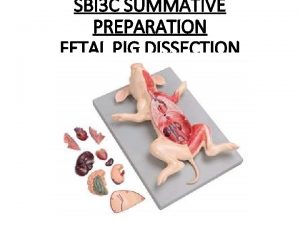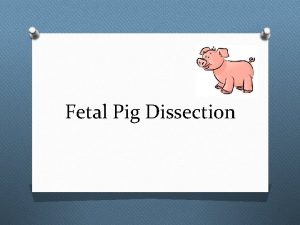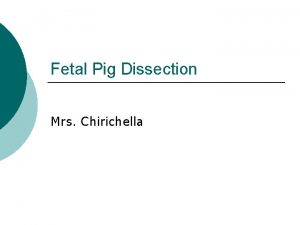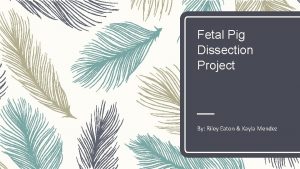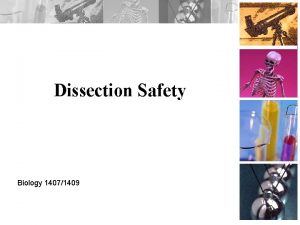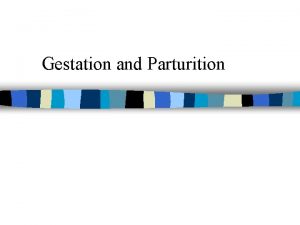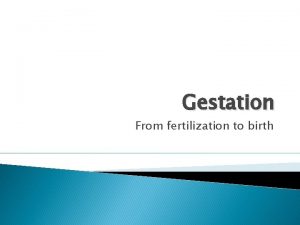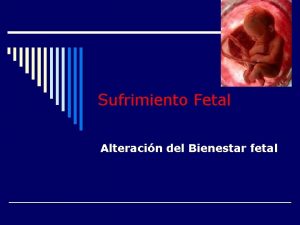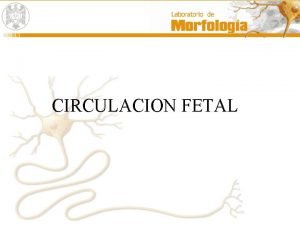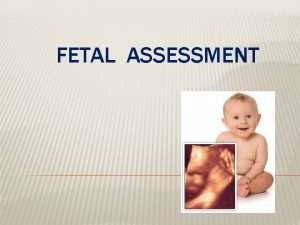Fetal Pig Dissection OConnorForensics Gestation is 114 days
























- Slides: 24

Fetal Pig Dissection O’Connor/Forensics

Gestation is 114 days in length (+/- 2 days) or 3 months, 3 weeks, and 3 days.

Pig birth

Taxonomy of Pig • • Kingdom: Animalia Phylum: Chordata Class: Mammalia Order: Artiodactyla Family: Suidae Genus: Sus Species: Sus Domestica

Pig Litter • The average number of piglets/litter used to be 12 -14 • Currently they have been bred to deliver an average of 16 piglets.

Orientation • The following words will be used to help identify the location of structures. • Anterior refers to the head end. If a structure is anterior to another then it is closer to the head. • Posterior refers to the tail end. • Dorsal refers to the back side. The pig in the first photograph below is laying on its dorsal side. • Ventral is the belly side. It is opposite the dorsal side.

Physical Description • A typical pig has a large head with a long snout which is strengthened by a special prenasal bone and by a disk of cartilage at the tip. The snout is used to dig into the soil to find food and is a very acute sense organ. There are four hoofed toes on each foot, with the two larger central toes bearing most of the weight, but the outer two also being used in soft ground. They are quadruped, walking on all fours. Epidermal skin is on surface & cut in dissection. The skin has appendages, most common is hair. • The dental formula of adult pigs is 3. 1. 4. 3 in each jaw, giving a total of 44 teeth. The rear teeth are adapted for crushing. In the male the canine teeth form tusks.

Description continued • Pigs eat both plants and animals, making them Omnivores • They walk on hooves so they are unguligrade. • (walk on toes/digitigrade- walk on flat/plantigrade) • The openings in their nose are known as nares. • Pinnae is the long fold in the ear. • Hair is course and unevenly distributed on body. • Fat distribution is much like humans & the skin is also similar.

Virtual Dissection • dissection tour

Ultimate Pig Review • Biology Corner Pig Review

Preparation and Initial Cuts • Tie one front leg of the animal with a string that passes underneath the dissecting pan to the other leg. Repeat this with the back leg.

First Cut • Insert one blade of scissors through the body wall on one side of the umbilical cord and cut posteriorly to the base of the leg as shown in the first photograph. Continue cutting from the anterior end of this cut so that it resembles an upside-down U. Your finished cut will be anterior to the navel and along each side of the navel. The flap of body wall that contains the navel can be folded posteriorly to reveal the internal organs of the abdomen.

First cut photo’s











 Fetal pig
Fetal pig Site:slidetodoc.com
Site:slidetodoc.com ( 0 0 299 587 114 ) | ( 0 0 299 587 )
( 0 0 299 587 114 ) | ( 0 0 299 587 ) Fetal pig dorsal aorta
Fetal pig dorsal aorta Swine integumentary system
Swine integumentary system Anterior pig
Anterior pig Fetal pig masseter muscle
Fetal pig masseter muscle Virtual mink dissection
Virtual mink dissection Respiratory system fetal pig
Respiratory system fetal pig Fetal pig
Fetal pig Youtube
Youtube Pharynx function earthworm
Pharynx function earthworm Cat trachea
Cat trachea Parotid gland fetal pig
Parotid gland fetal pig Fetal pig gender determination
Fetal pig gender determination Twin pregnancy icd 10 code
Twin pregnancy icd 10 code Age in days calculator angus
Age in days calculator angus Gestation berger allemand
Gestation berger allemand Origin of beefmaster cattle
Origin of beefmaster cattle La gpa
La gpa Taskj-114
Taskj-114 Npi via monginevro
Npi via monginevro Aiaa s-114
Aiaa s-114 Csit 114
Csit 114 Solicitud de licencia articulo 114 y 115 decreto 688/93
Solicitud de licencia articulo 114 y 115 decreto 688/93
